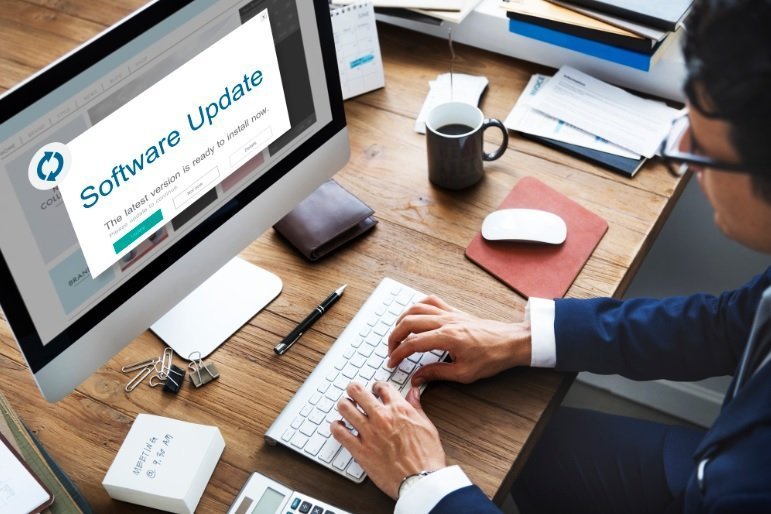There’s a big difference between updating and upgrading your software. Updating is easy. Software companies regularly roll out updates that can be installed in just a few minutes. These updates don’t cost any money, and they usually don’t alter the way the software is used.
Upgrading software is a lot different. Upgrading requires a business to invest in new software, which costs money, and employees will need to be trained, which takes time. It’s easy to see why so many companies put off upgrading software and systems for as long as possible.

You shouldn’t! There are actually some really good reasons to upgrade your software, even if it isn’t easy.
It Can Keep Information and Services More Secure
Security is extremely important when it comes to keeping company information out of the wrong hands, but it’s also important to your customers and clients. By using old software, you could be putting all of your information at risk.
This is an important consideration for programmers who use Python. Updating from Python 2 to Python 3 can be a hassle, but it can also keep information more secure, “Companies using older versions is not good for the language community because they want to move things along and don’t want their language to be known as having large security holes based on these older versions,” according to Jeff Rouse of Active State.
Keeping an eye on the future of the business means making sure everything is secure, which also happens to mean upgrading software, when needed.
It Can Reduce Costs
New software is an investment upfront. It’s always going to be cheaper in the short-term to use the software you’re already using. However, not upgrading your software could cost you in the long run.
Spend the money now and you can reduce costs later by:
- Increasing new revenue for products and services that can’t be provided by the current system
- Increasing profit margins by charging more for premium services
- Tackling new markets in new locations
- Retaining existing customers
- Reducing support costs for maintaining bulky, obsolete systems
New software will require you to retrain your staff, which can be annoying, but it may reduce the time needed to train new employees later, saving you more time, and money, in the long run.
It Can Increase Productivity
There are many ways you can increase employee productivity. By all means, create a supportive atmosphere, offer incentives, and be flexible, but one of the best ways to increase productivity in the long-term is to switch to new software.
Just because you’re familiar with your current software doesn’t mean it keeps everyone productive. As it becomes more and more obsolete, trying to use it with other, more modern systems can really slow everyone down. Not to mention, new programs may have features that make a task go more quickly, simply because it is designed better.
Put in the time to train your employees on a new system now and they’ll reward you with greater productivity later.
Timely Upgrades Can Keep You Ahead of the Competition
Pulling ahead of the competition is no easy feat. From rolling out new products to offering bigger and better sales, you always have to try and stay one step ahead of your competitors. A software upgrade can help you do that.
New software often has new things to offer, which means you have new things to offer your customers. Be one of the first to upgrade your software and you can offer something that no one else can.
New software can also help you provide better customer service. Pull customer information up faster, keep more detailed information on file, and speed up the overall process of interacting with customers.
You Will Learn and Grow
If you want your business to grow, you and your employees have to grow, which means learning new things and keeping up with modern technology.
Learning a new system can help you understand the operations of your business better, and it can help you learn more about modern technology and where it’s heading. It’s a great way to become even more of an expert in your niche, which is knowledge you can pass along to your customers.
Don’t put off buying new software because the cost seems too high now. The cost to your business will only climb higher over time! Instead, feel confident in your decision to upgrade your software, and both your employees and your customers will reap the rewards.